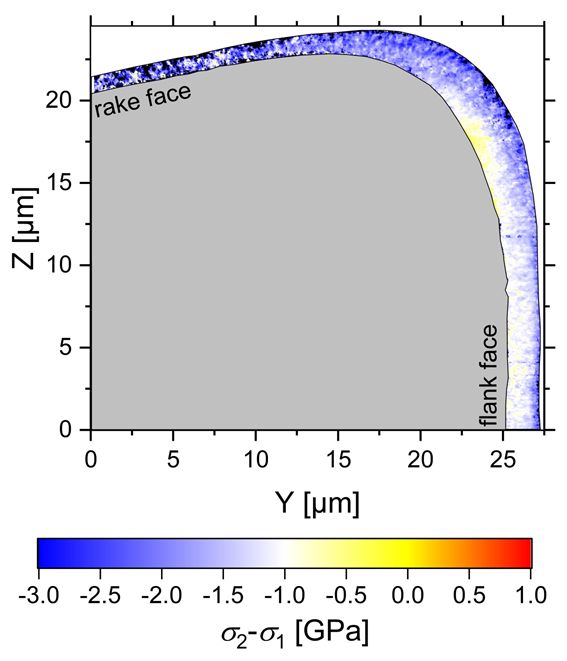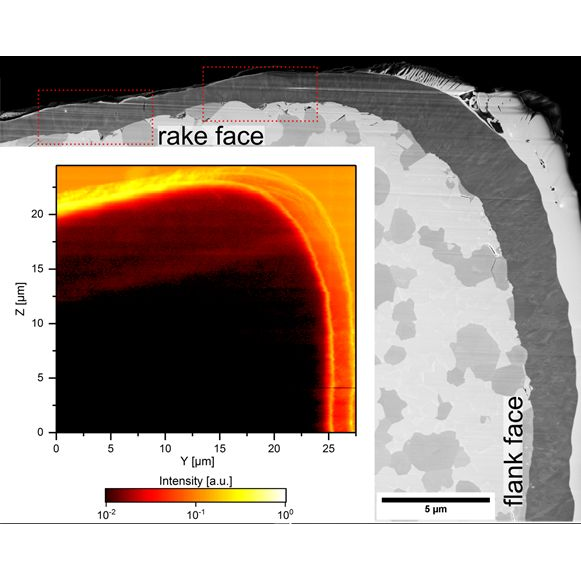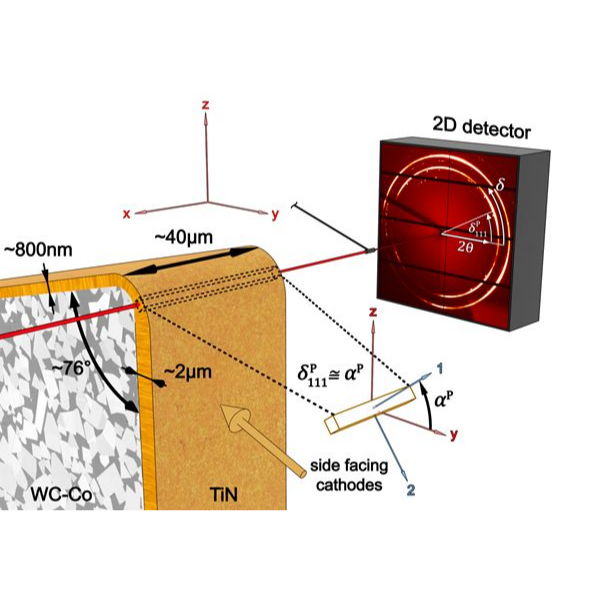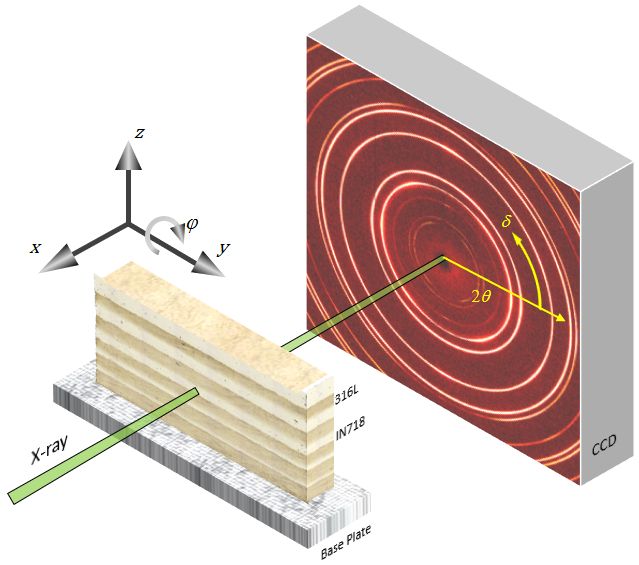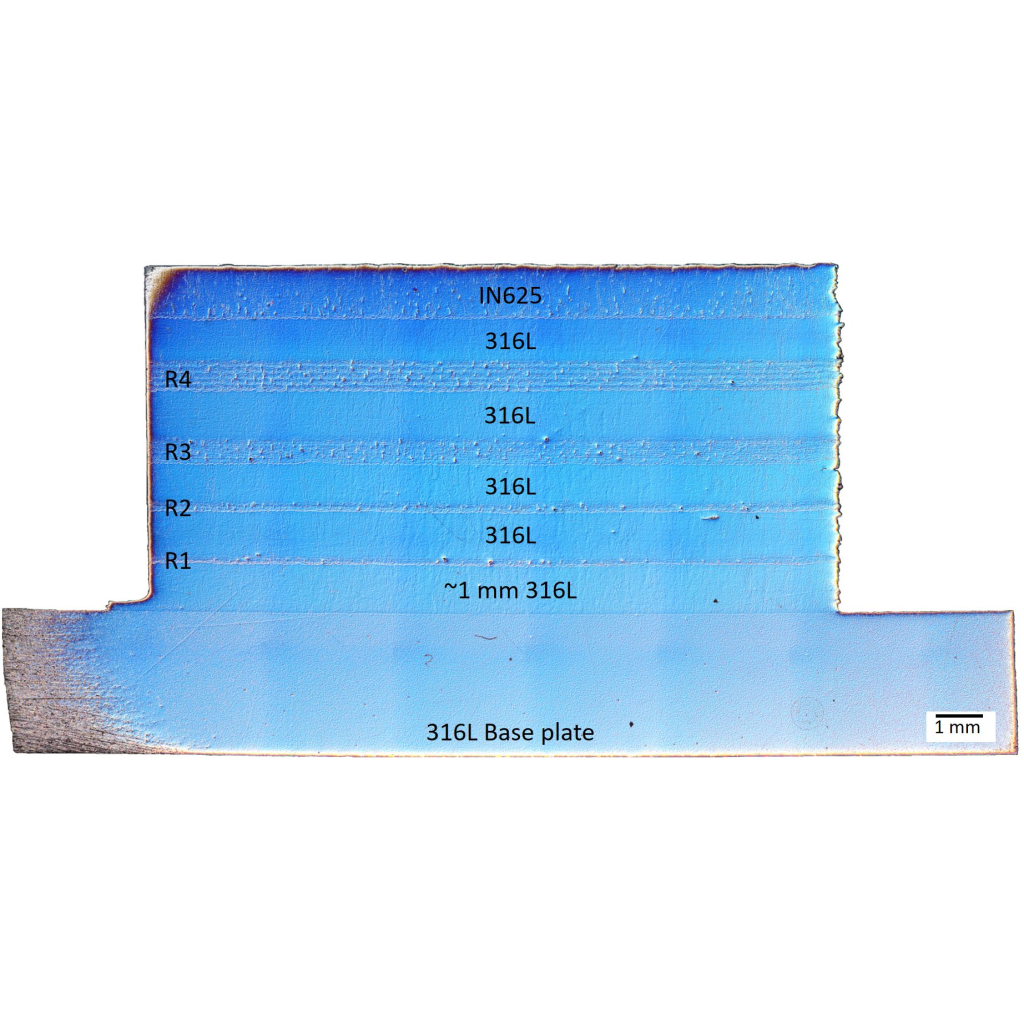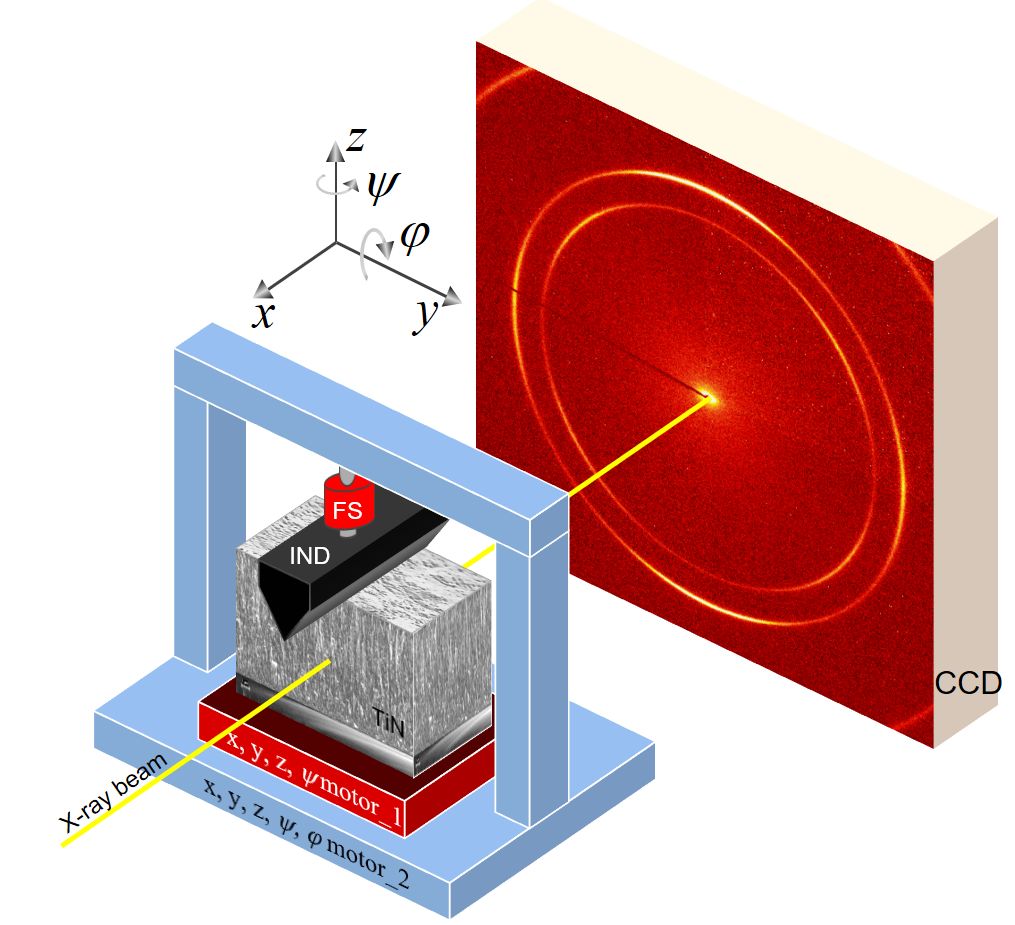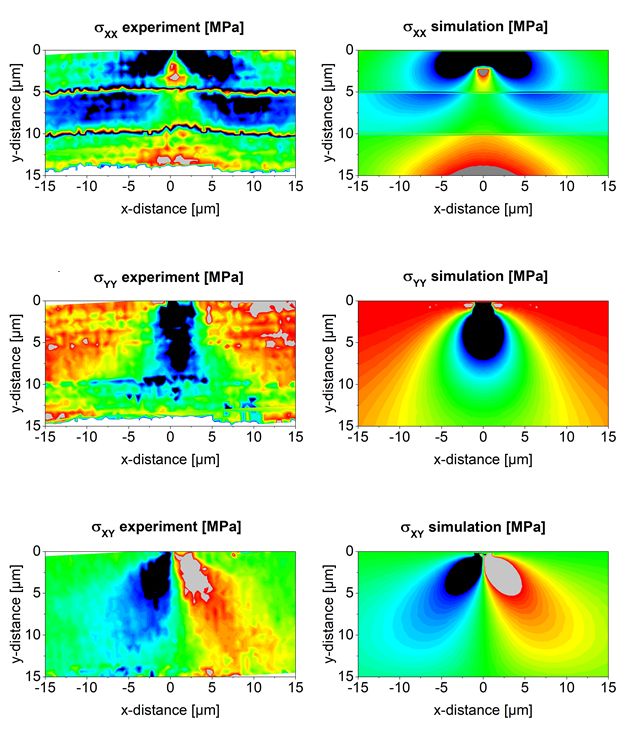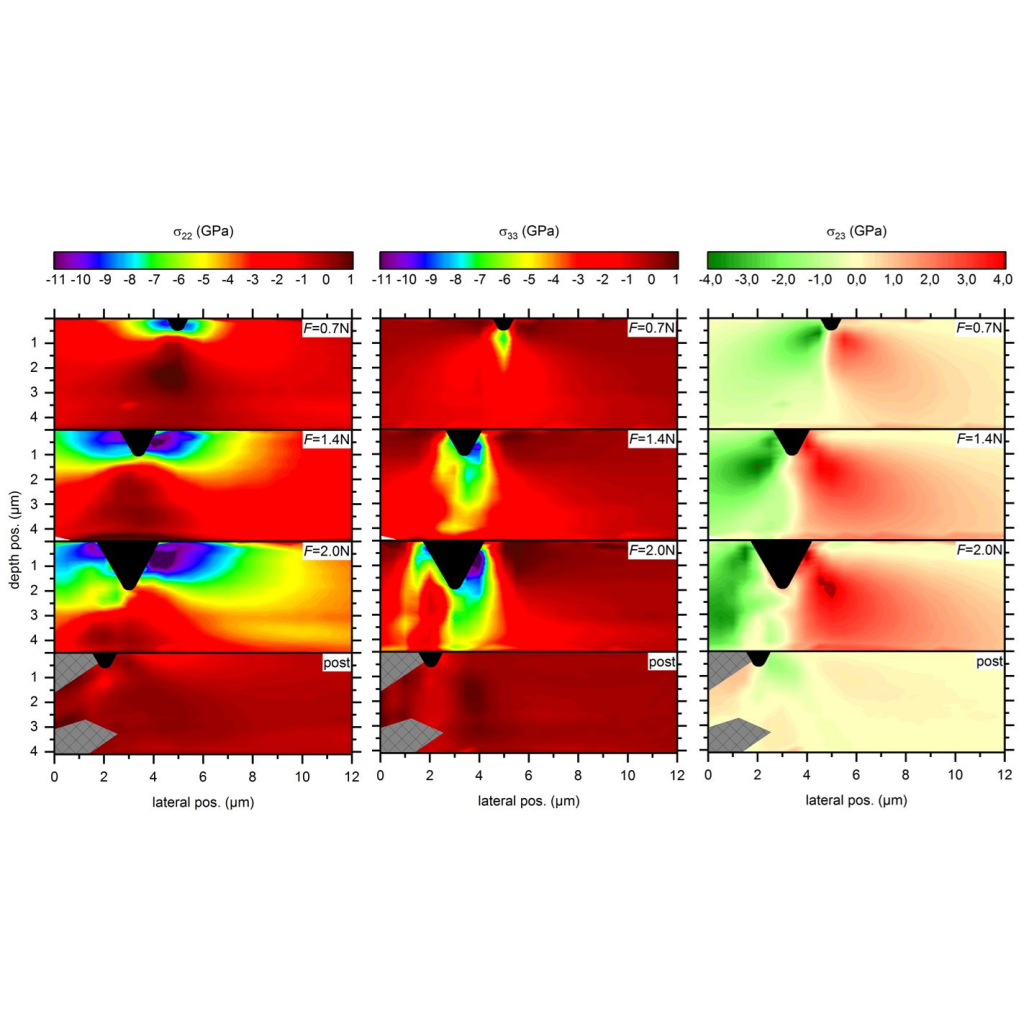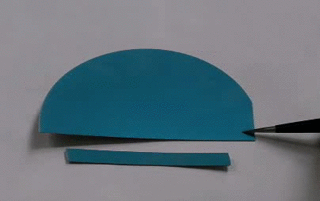Research Aims and Motivation
In collaboration with our industrial and academic partners, we are performing characterization of residual stresses at macro-, micro- and nano-scales using laboratory and synchrotron X-ray diffraction, neutron diffraction, electron diffraction, the wafer curvature method and the ion-beam layer removal method. Our main motivation is to quantify stresses and stress distributions and to obtain also a correlation between the materials’ microstructure and processing parameters.
Residual Stress Gradients Across the Cutting-Edge Area of a TiN Coating on WC-Co
- 35 x 25 nm2 X-ray beam nanodiffraction was used at the ID13 beamline of ESRF in Grenoble (FRA) to characterize residual stress gradients at the cross-section of a 2µm thick TiN film deposited onto a WC-Co substrate cutting-edge substrate
- the planar regions next to the edge exhibit gradual and constant stress profiles with anisotropic defect build-ups on the flank and rake faces, respectively
- directly at the edge, nonlinear lateral and cross-sectional compressive residual stress gradients up to about -3 GPa have been observed
- the coating’s <111> fibre texture orientation correlates with the orientation of principal stress components
Residual Stresses in Additively Manufactured Structures
- high-energy synchrotron X-ray diffraction was used at the high-energy materials science (HEMS) beamline P07 at PETRA III in Hamburg to obtain the residual stress distribution across an Inconel 625 / Steel 316L multilayer with a resolution of 20µm
- the occurrence of a C-shaped stress gradient with a negligible near-base plate stress, oscillating compressive stresses levels of approx. -150 MPa and a pronounced surface tensile stress of approx. 500 MPa are interpreted by the temperature gradient mechanism model
In-situ Stress Characterization During Indentation
- cross-sectional X-ray nanodiffraction is used to characterize stress gradients across indented thin film nanostructures
- CSnanoXRD data are used to evaluate the evolution of stress concentrations at particular indentation loads
- stress concentrations are correlated with cross-sectional deformation and fracture mechanisms
Wafer Curvature and Ion-Beam Layer Removal Method
- characterization of residual stresses in thin films using the wafer curvature technique employing Stoney’s equation
- characterization of residual stress gradients in thin films bassed on sequential removal of thin film portions on a microscale bending beam, observing the consequent changes to beam deflection



